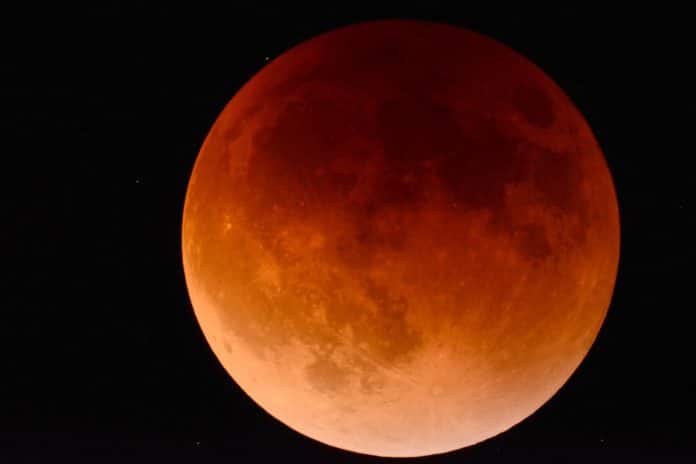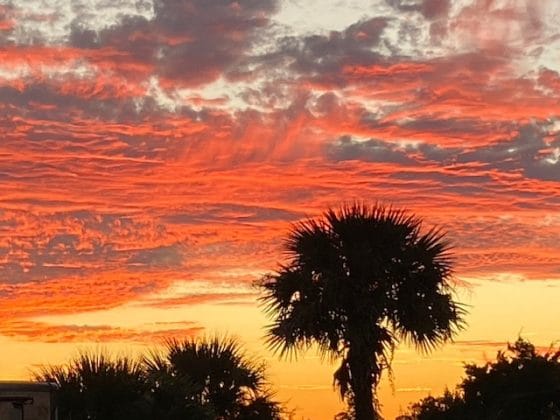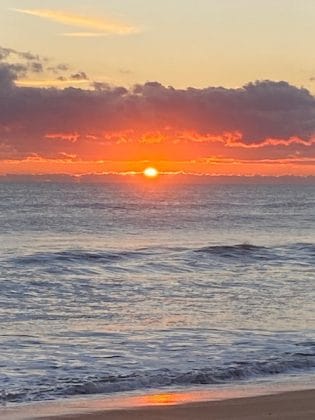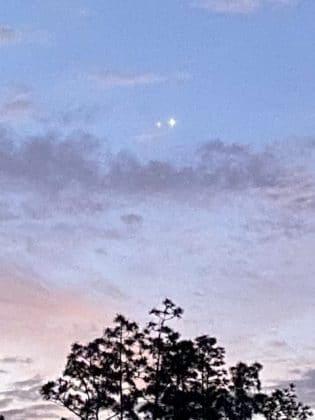On the night of May 15, we’ll have a double treat! It will be a Flower Full Moon and a total lunar eclipse. But how does a lunar eclipse even happen? It occurs when the earth comes between the moon and the sun, then the earth’s shadow creates darkness on the moon’s surface. Sometimes it only covers part of the moon, like a bite out of an apple. Other times, like on May 15, we have a total lunar eclipse. Sometimes eclipses are not visible in our area and other times everyone gets to see it. We are fortunate that this one cuts a wide viewing path over much of North America and all of South America. It should be spectacular, weather permitting!
During this lunar eclipse, the full moon will pass through the earth’s shadow for over five hours. When it first starts, we won’t notice much. Here is some of the timing; We should see some shading across the moon’s surface before 10:30 pm on Sunday, May 15. Full shading is around 11:30 pm. Hang on and stay up past midnight for the final show because the eclipse will peak at 12:11 am and by 12:53 am the total lunar eclipse will end. The moon will move out of the earth’s shadow over the next hour and the eclipse will be all over by 1:55 am. Then when Monday morning rolls around, the Full Flower Moon will continue to shine on as if nothing happened at all!
It is easy to see how the Full Flower Moon got its name when you notice the abundance of colorful flowers that bloom in May. Native Americans also called it Leaf Budding Moon and Egg Laying Moon. They were always observant of nature and chose many moon names based on plant or animal activity.
May’s full moon has several distinctions, It is also considered a supermoon. That phrase has been around since 1979 when it was first used by astrologer Richard Nolle. It means a new or full moon occurring at or very near its closest orbit to earth. Supermoons are closer to earth by some 12,000 to 15,000 miles and they happen a few times per year. Can you imagine that the moon is really 238,855 miles away on an average night? That is the distance of 30 earth-sized planets away from us! And supermoons are definitely brighter. They illuminate the sky by up to 30% more! Watch for additional supermoon full moons in June and July.
May’s full moon is also called a Blood Full Moon. Did you know that the moon has no light of its own but reflects back sunlight? During the eclipse the earth blocks off sunlight so why doesn’t the moon just turn black? Instead, the full moon takes on an eery, reddish glow. This is because it is picking up colors from earth that have longer wavelengths and can get through the atmosphere. Red and orange are the colors that end up coming through. But what shade of the full moon is dependent on the amount of dust particles, water droplets, clouds, or mist in the air at the time.
Our atmosphere is pretty amazing. It can make the moon look orange when low to the horizon. It gives us rose-colored sunsets and golden sunrises. It makes colors linger in the sky at dawn and at dusk. It makes a lunar eclipse something special. I am hoping for a clear night to witness the Full Flower Moon!





